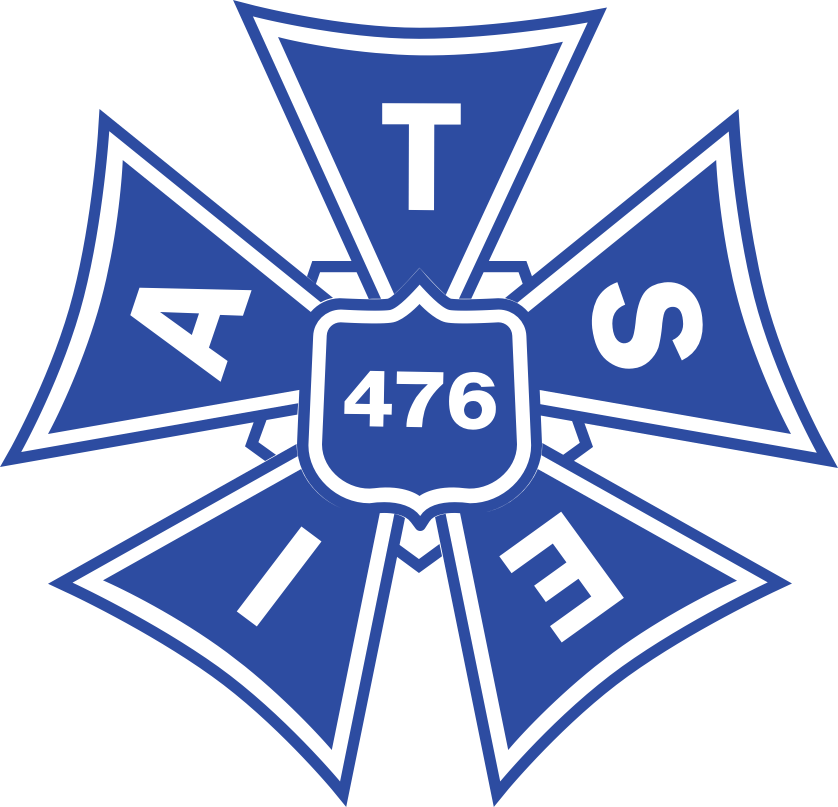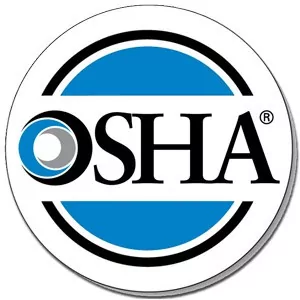SAFETY INFORMATION
These quick reference guidelines were created by Local 476 using OSHA recommendations, Ansi Standards, Vendor policy , Manufacturer Requirements and Counsel from Various Studio Safety Departments. (These may vary depending on show. Please verify safety protocols with your Studio Safety Representatives.)
Created on Behalf of Local 476 using OSHA recommendations, Ansi Standards, Vendor policy , Manufacturer Requirements and Counsel from Various Studio Safety Departments. May vary by show
If thunder can be heard, or lightning is visible, action should be taken to monitor the distance and a safety action plan should be considered. If lightning strikes at a minimum of 10 miles away, preparation to implement safety protocols should commence (for example: directing crew, bringing all lifts to the ground, disabling generators, securing and covering equipment etc.). When Lightning strikes at A MINIMUM OF 6 MILES away, WORK MUST BE STOPPED IMMEDIATELY AND COVER MUST BE TAKEN.(Stay away from all metal objects, equipment, and surfaces that can conduct electricity. Do NOT shelter in sheds, pavilions, tents, or covered porches as they do not provide adequate protection from lightning. Seek fully-enclosed, substantial buildings with wiring and plumbing. If no indoor shelter is available, OSHA recommends employees shelter in hard-top vehicles).
Production, Studio Safety or an agreed upon member of the crew (generally the Key Grip) should be equipped with a lightning detector or accurate phone application. These devices ensure that a proper real-time assessment of lightning distances and storm movement is made before allowing the crew to safely return to work.
If a lightning detector or phone app is unavailable or malfunctions, Follow the 30-30 rule:
If the time between the lightning flash and the crack of thunder is 30 seconds or less, the lightning is about 6 miles away or closer. In either case, You must wait 30 minutes from the last lightning strike to begin working again. If lightning strikes at 29 mins 59 seconds, THE CLOCK RESTARTS
(Metric used to calculate lighting distance by National Weather Service)
(Since you see lightning immediately and it takes the sound of thunder about 5 seconds to travel a mile, you can calculate the distance between you and the lightning. If you count the number of seconds between the flash of lightning and the sound of thunder, and then divide by 5, you’ll get the distance in miles to the lightning: 5 seconds = 1 mile, 15 seconds = 3 miles, 0 seconds = very close)
Created on Behalf of Local 476 using OSHA recommendations, Ansi Standards, Vendor policy , Manufacturer Requirements and Counsel from Various Studio Safety Departments. May vary by show
Regardless of Department, when working in increased wind speed conditions, an anemometer is needed to accurately detect safe or unsafe wind speeds. Generally this device is provided by Studio Safety or Grip Department. Wind speed must be monitored when working on Rooftops, elevated platforms, scaffolding, lifts, and on the ground at all times.
OSHA (The Occupational Safety and Health Administration) normally considers wind speeds that are exceeding 40 miles per hour as high winds. If the work involves material handling, high winds can be considered at 30 miles per hour, unless the employer takes precautions to protect employees from the hazards of the wind.
When working from height (Scaffold/Rooftop):
Winds in excess of 18-23 MPH will affect a worker’s balance, especially when working at a height. All work from height does require either railings or a fall protection system.
When working in Lifts:
OSHA notes that in the absence of manufacturers’ specific written advice, seriously consider postponing use of the lift if the wind speed/gust is in the range of 15-28 mph. Above 28 mph use of the lift must be canceled.
Note: When film/grip equipment is attached to lifts (example: fly swatters, light boxes, dumb boxes, Large Lights ect) will drastically reduce this limit. Please see the chart below for modified wind restrictions.
Wind Speed Chart for Grip fabrics and Frames
(Height of the Platform needs to be limited to 80 feet)
| 20 X 20 | 11 MPH |
| 12 X 12 | 11 MPH |
| 8X8 | 11 MPH |
| 6X6 | 11 MPH |
| 4×4 | 11 MPH |
Created on Behalf of Local 476 using OSHA recommendations, Ansi Standards, Vendor policy , Manufacturer Requirements and Counsel from Various Studio Safety Departments. May vary by show
Ansi Standards for MEWP
Weather and Fall Protection(Please note that Ansi Standards are a minimum. Production may require additional safety protocols)
Ansi Standard A92.22: Safe Use of Mobile Elevating Work Platforms (MEWP)
A.K.A (Condor/Boom Lift/ Scissor Lift)
Types of MEWPS (Lifts)
Group A: MEWPS on which the vertical projection of the center of the platform area, in all platform configurations at the maximum chassis inclination specified by the manufacturer, is always inside the tipping lines.
Examples:
- Scissor Lift
- Single Genie Lift
Group B: MEWPS not in Group A
Examples:
- Boom Lifts (Condors, Toucans)
(6.8.2) Fall Protection:
(6.8.1.1) The guardrail system of the MEWP is the primary fall protection for occupants. When required to use personal fall protection, either fall restraint or fall arrest, operators and occupants shall comply with the instructions provided by the manufacturer regarding anchorage(s).
(6.8.1.2) All group B MEWP operators and occupants shall use personal fall arrest or fall restraint systems at all times.
(6.8.2) Weather Considerations:
The user shall define and the operator shall comply with control measures to address the potential risk associated with weather conditions when operating MEWPSs, to include conditions such as wind, lighting, ice, fog or any other weather condition that directly or indirectly affects the safe operation of a MEWP as appropriate.
Control Measures:
(6.8.2.1) Effect of Wind Forces on MEWPS
Lifts shall not operate in wind speed conditions beyond the maximum allowed by the manufacturer. No modifications or additions to the MEWP that affect its wind loading and consequently its stability shall be made without the manufacturer’s approval. (generally displayed on a placard that looks like this)
(6.8.2.2) Effect of Wind on Equipment in the Work Platform
Care shall be taken when handling building materials, sheet materials, panels and other such material which CAN ACT AS SAILS.
(6.8.2.3) Local Wind Effects
The shielding and funneling effects of structures can cause high wind speeds and turbulence on days when the wind speed in open areas is low. Other sources of local high wind speed that shall be considered in relation to safety at worksites are at airports and along roadways.
Ansi Standard A92.22 (6.8.2.4.) Use in thunderstorms
MEWPS shall not be used outdoors in a thunderstorm. MEWPS can be used inside of a building where the MEWP and operator are not subject to a lightning strike.
(Please note that Ansi Standards are a minimum. Production may require additional safety protocols)




